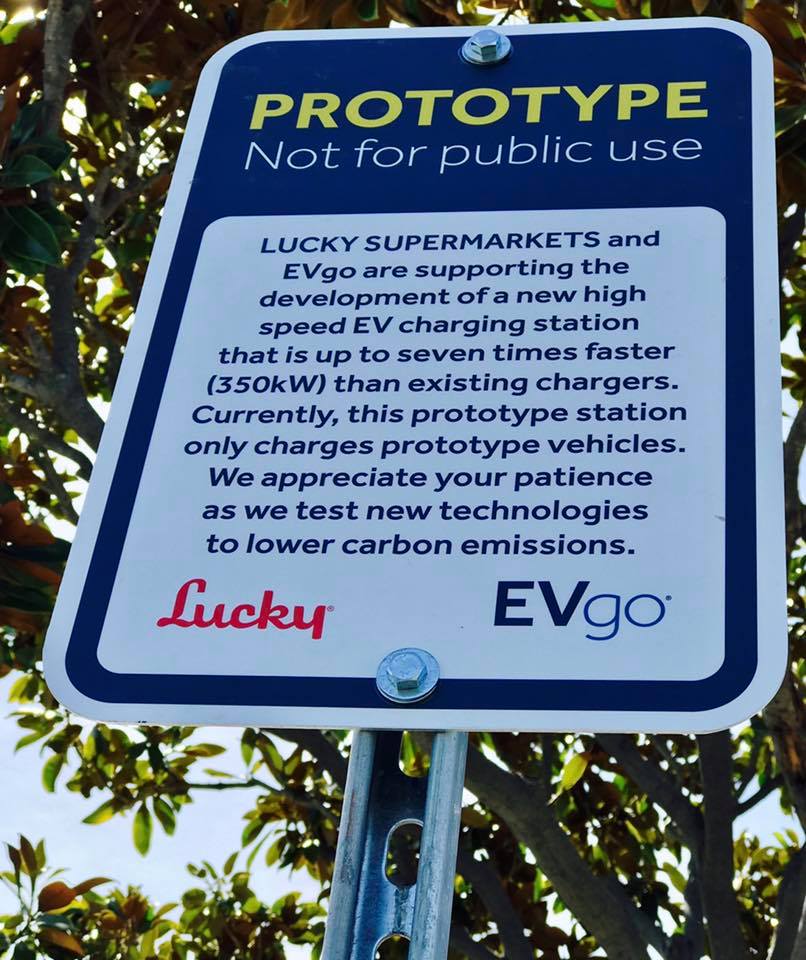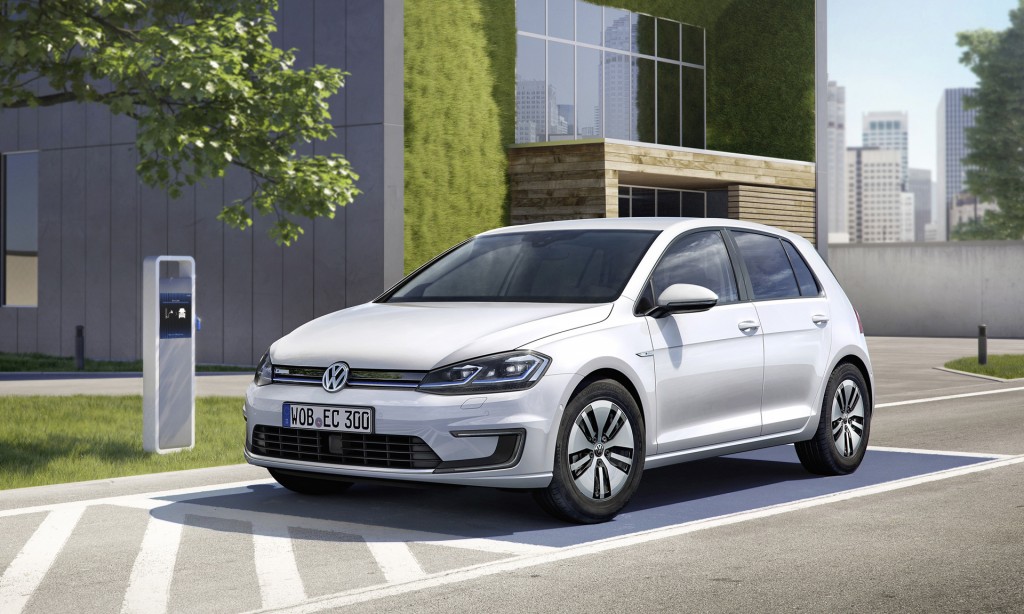Charging infrastructure projects for electric cars have mostly focused on expanding the number of charging sites available to the public over the last six years.
But now significant effort is also being put into increasing the power those public charging stations can provide.
This is due to anticipated technological improvements to electric-car charging, boosting the capabilities of both onboard chargers and battery packs.
DON'T MISS: Chevy Bolt EV, Hyundai Ioniq show slow, confusing state of 'fast' charging today
Network operators will need to "future proof" their stations to provide for electric cars with larger battery packs that can charge at higher rates than today's vehicles.
Now that talk of higher-power charging stations is turning into action.
The first example of that is a prototype charging station installed by the EVgo network and European engineering company ABB in Fremont, California.

Sign at prototype fast-charging station in Fremont California (Photo by Khanh Vo)
Fremont happens to be the home of Tesla's assembly plant, but Tesla drivers will continue using stations built and maintained by the automaker for its proprietary Supercharger standard.
The prototype EVgo station uses the Combined Charging Standard preferred by the non-Tesla U.S. automakers and the German firms.
It is currently set to charge at 150 kilowatts, but the company says it is capable of charging at up to 350 kw.
ALSO SEE: BMW, Ford, Mercedes, VW Group to build electric-car fast-charging network in Europe (Nov 2016)
EVgo is using the station to "study utility impacts, installation standards, permitting, and building and safety requirements," according to a company press release.
Located in the parking lot of a Lucky Supermarket, will also be used as a model for electrical-certification committees and building-code officials, EVgo said.
However, the station is not open to the public. A sign by the station notes that it is "not for public use," explaining that "currently, this prototype station only charges prototype vehicles."
2017 Volkswagen e-Golf
Volkswagen aims for 320 kw
Simultaneously, the "Electrify America" charging-infrastructure plan that resulted from penalties levied on Volkswagen for its diesel emission scandal calls for a fairly large number of high-power stations.
They will be part of $200 million earmarked for California in the first of four 2.5-year investment cycles. As part of the diesel settlement, VW must spend spend $2 billion over 10 years on zero-emission vehicle infrastructure, primarily electric-car charging stations.
A plan recently submitted to regulators calls for a network of DC fast-charging stations along California highways, with about half rated at 320 kw and the rest at 150 kw.
CHECK OUT: VW's Electrify America submits electric-car charging plan to EPA, CARB: now what?
The network would include 50 charging sites, averaging five individual charging stations per location.
Pre-selection of sites could begin this year, with stations coming online in 2018 and 2019, according to the plan.
That's pending approval of the plan by the California Air Resources Board, which plans to discuss additional details at a public meeting this Friday.
_______________________________________________












